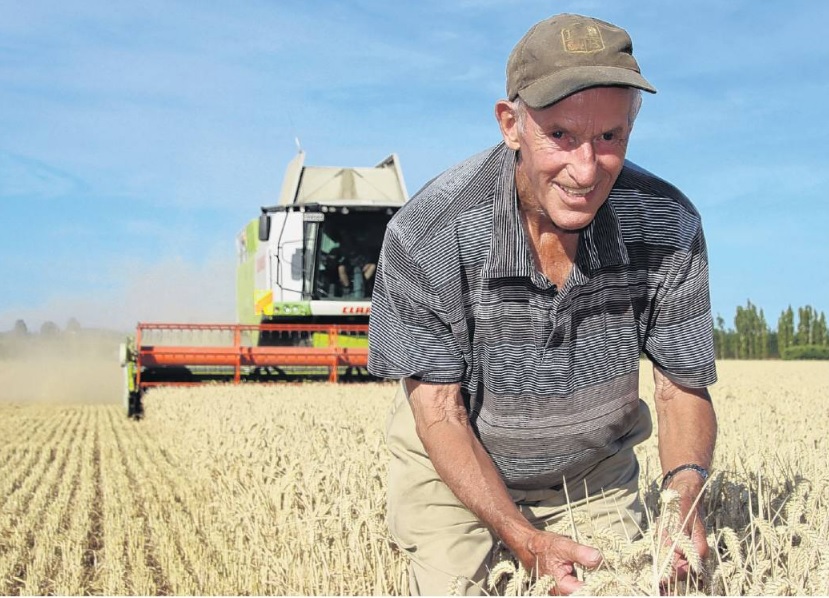It might not have been the world record-breaking birthday present he was hoping for but Mike Solari is still rejoicing.
Recently, a paddock of wheat grown on the river flat farm at Otama Mr Solari and wife Margaret owns yielded 15.7 tonnes to the hectare.
Last April, before the crop was sown, it was entered as a world record attempt by PGG Wrightson Seeds arable representative Nick Hishon.
The record for the highest yield is 17.398 tonnes per hectare, held by Eric Watson, of Ashburton.
Mr Solari recently celebrated his 80th birthday.
Despite not breaking the record it was the best yield of wheat he had grown in 48 years, he said.
‘‘I am very happy with the result,’’ Mr Solari said.
He knew it would be a good yield but the lack of rain in January affected the crop.
‘‘The hot days brought the ripening on a bit quicker.’’
The rain in early February was a little late to make much of a difference.
‘‘At the end of the day it is what it is — it’s what we have been given.’’
In 2010, Mr Solari broke the record with a crop which yielded 15.63 tonnes per hectare.
He grew the wheat variety Firelight because of its disease resistance, he said.

‘‘I’ve come to the conclusion that what’s good for people’s gardens is good for our wheat.’’
Once the peas were harvested the straw was cut up and ploughed under.
He then used a sub›soiler implement, with 50cm-long legs, to dig down deep into the soil to break it up where it was compacted.
He had heard if the soil was loose the wheat roots would go down into the soil about 150cm.
‘‘On this river flat it means [the roots] are going down into the water table.
‘‘Not only do the roots go down but the moisture comes up too from underneath.’’
While he did not use irrigation, the ‘‘sub-soiler is my irrigator’’.
It was a team effort to produce the crop with Knapdale farmer Blair McKenzie sowing the seed and harvesting the crop.
Mr Solari also credited some divine intervention with the result. ‘
‘The good Lord is the captain of the team.’’
Mr McKenzie fattened lambs on the farm that were an important part of the nine-year crop rotation, which was working well.
He himself was planning on farming for two more years, Mr Solari said.
‘‘I just get an enjoyment out of it.
‘‘My favourite job is still ploughing — I love turning the soil, love watching the furrows turn over.’’
Mr Hishon said while the yield fell short of the record it was still a good crop.
‘‘It would be one of the best wheat crops in Southland.’’
- Sandy Eggleston




















